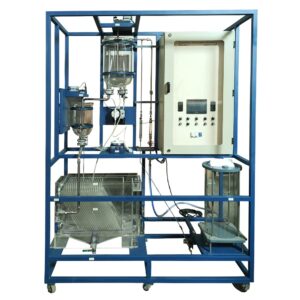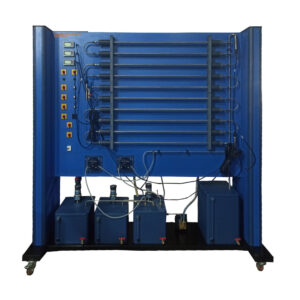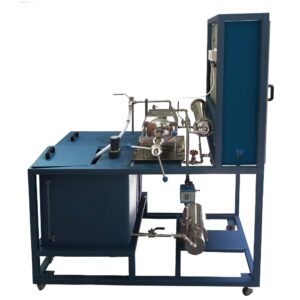The activated sludge pilot plant consists of an oxidation reactor and a settler according to the traditional process of single-stage sewage treatment process. The most significant biological process in water treatment is the activated sludge process. This pilot plant enables this process to be demonstrated. The aeration tank receives raw water that has been contaminated with dissolved organic compounds (organic matter) via a pump. The organic matter is used as a source of nourishment by aerobic microorganisms (activated sludge) in the aeration tank, which in turn biodegrades it.
The aeration tank aerates the raw water because aerobic microbes require oxygen to survive. The agitator stirs the raw water and activated sludge together. The treated water is then settled away from the activated sludge in the secondary clarifier. The aeration tank receives some of the activated sludge back (return sludge). The cleaned water is put in a tank for storage. The studies call for activated sludge from a wastewater treatment facility and analysis equipment. The following parameters must be determined in order to analyze the experiments organic matter BOD5 or COD or TOC, nitrogen concentrations, ammonium, nitrite, and nitrate




